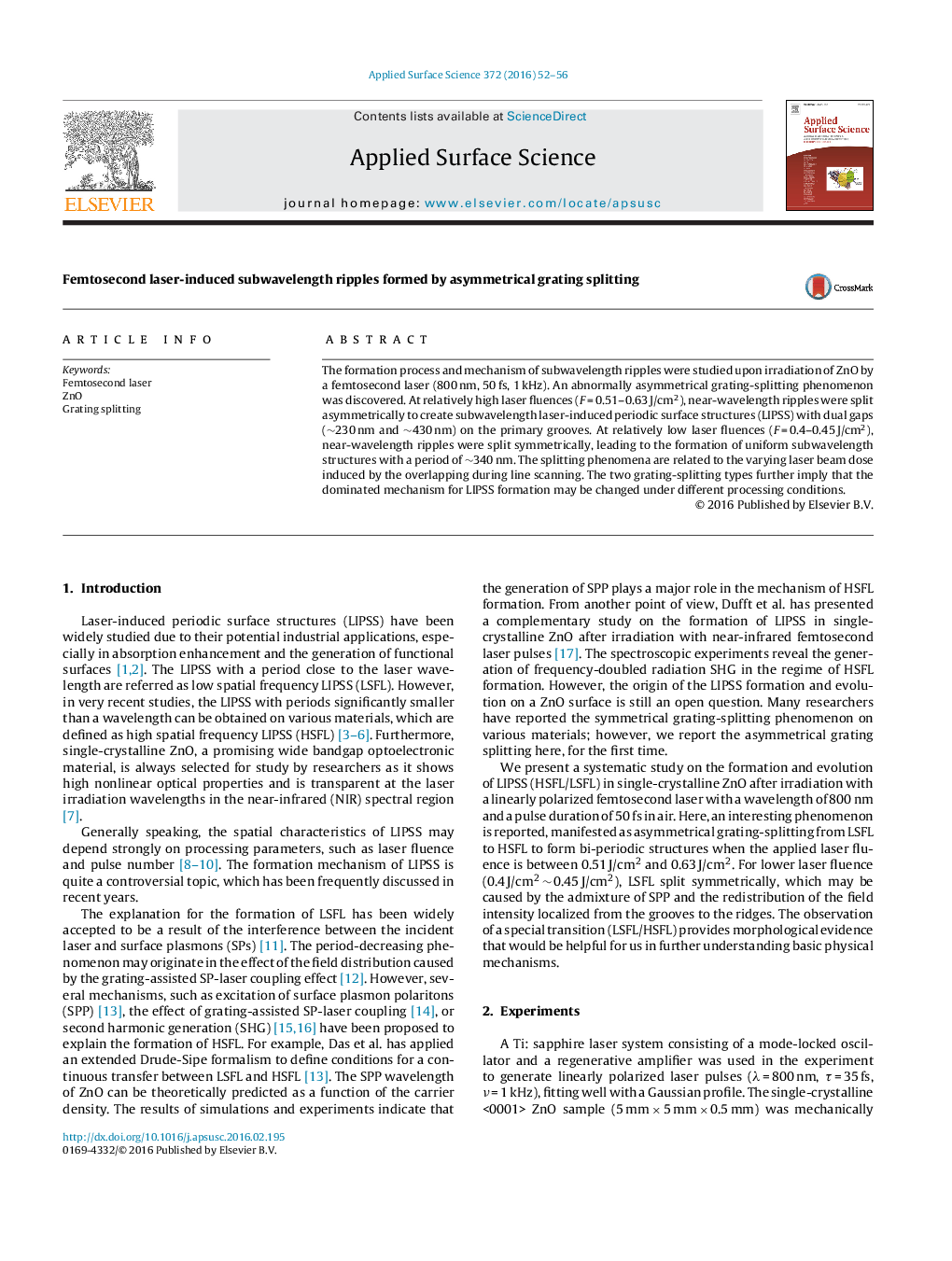| Article ID | Journal | Published Year | Pages | File Type |
|---|---|---|---|---|
| 5356503 | Applied Surface Science | 2016 | 5 Pages |
Abstract
The formation process and mechanism of subwavelength ripples were studied upon irradiation of ZnO by a femtosecond laser (800Â nm, 50Â fs, 1Â kHz). An abnormally asymmetrical grating-splitting phenomenon was discovered. At relatively high laser fluences (FÂ =Â 0.51-0.63Â J/cm2), near-wavelength ripples were split asymmetrically to create subwavelength laser-induced periodic surface structures (LIPSS) with dual gaps (â¼230Â nm and â¼430Â nm) on the primary grooves. At relatively low laser fluences (FÂ =Â 0.4-0.45Â J/cm2), near-wavelength ripples were split symmetrically, leading to the formation of uniform subwavelength structures with a period of â¼340Â nm. The splitting phenomena are related to the varying laser beam dose induced by the overlapping during line scanning. The two grating-splitting types further imply that the dominated mechanism for LIPSS formation may be changed under different processing conditions.
Keywords
Related Topics
Physical Sciences and Engineering
Chemistry
Physical and Theoretical Chemistry
Authors
Pin Feng, Lan Jiang, Xin Li, Kaihu Zhang, Xuesong Shi, Bo Li, Yongfeng Lu,
